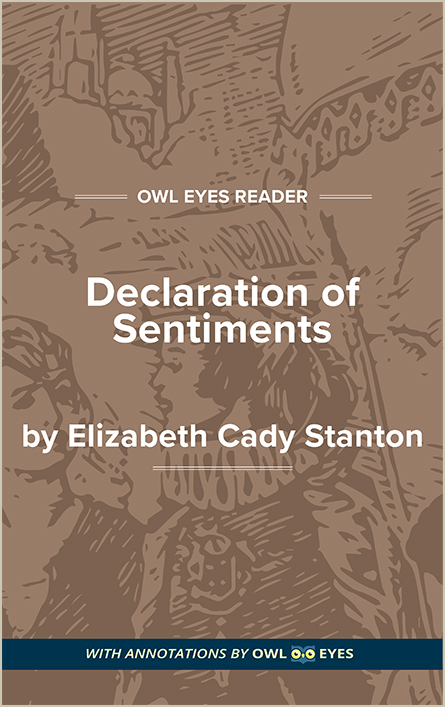Analysis Pages
Rhetorical Devices in Declaration of Sentiments
Ethos, Pathos, and Logos in Stanton’s Rhetoric: A powerful, passionate suffragist, Stanton understood the importance of appealing to her audience’s sense of ethos, pathos, and logos. In order to establish her credibility and appeal to her audience’s ethos, Stanton alludes to one of the nation’s greatest documents, The Declaration of Independence. Her audience would easily recognize this allusion, and comprehend Stanton’s parallel between monarchical oppression and patriarchal oppression. To appeal to her audience’s sense of pathos, Stanton employs stirring diction about women’s oppression under patriarchal laws. Finally, to appeal to her audience’s sense of logos, Stanton mimics one of the most powerful rhetorical moves in the Declaration of Independence. She sets up her argument and lays out her “facts” in a series of condemnatory grievances. By mimicking the Declaration of Independence’s structure and language, Stanton inherits the Founders’ powerful rhetoric. However, Stanton also subverts their original message and modifies their rhetoric to add another dimension of complexity to her declaration.
Rhetorical Devices Examples in Declaration of Sentiments:
Text of Stanton's Declaration
🔒"women do feel themselves aggrieved, oppressed, and fraudulently deprived of their most sacred rights,..." See in text (Text of Stanton's Declaration)
"Prudence..." See in text (Text of Stanton's Declaration)
"impel them to such a course. ..." See in text (Text of Stanton's Declaration)

